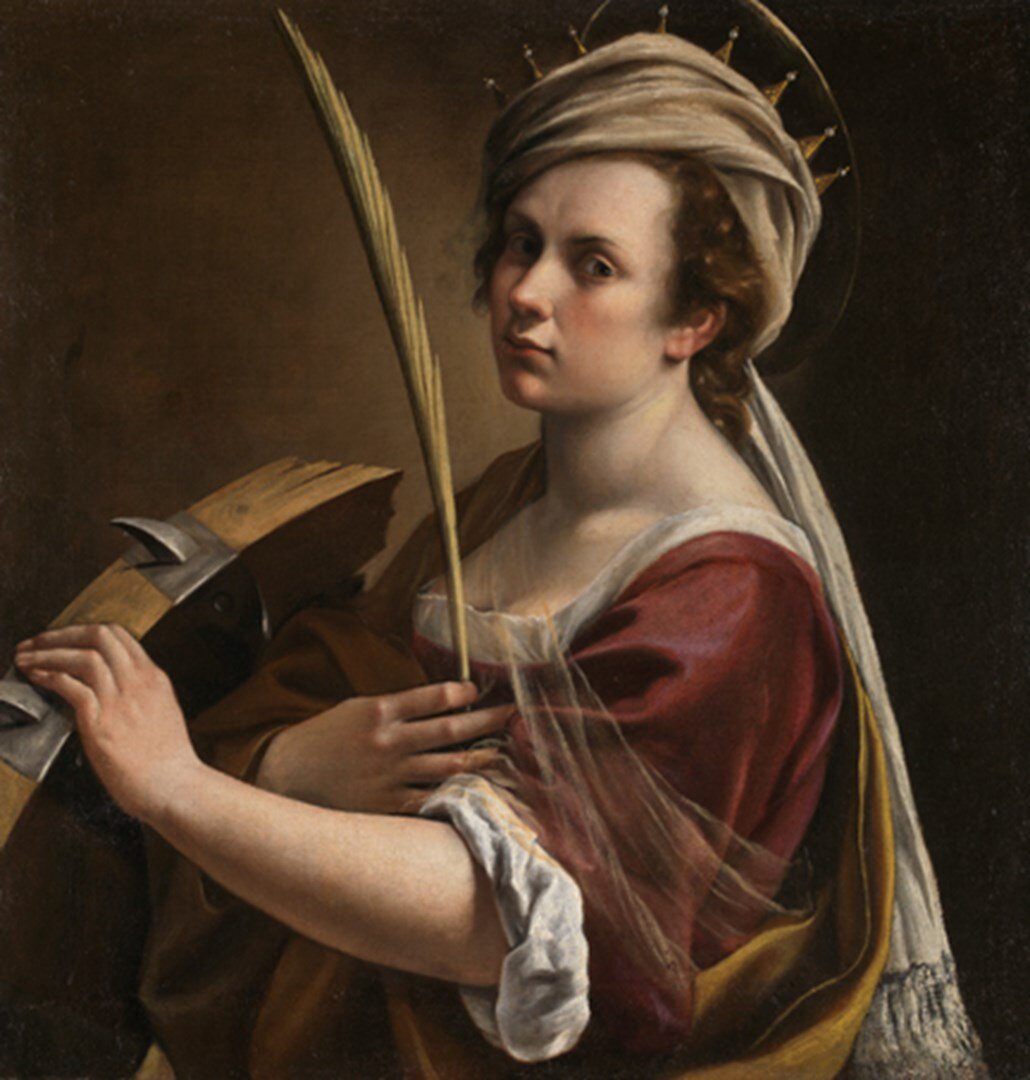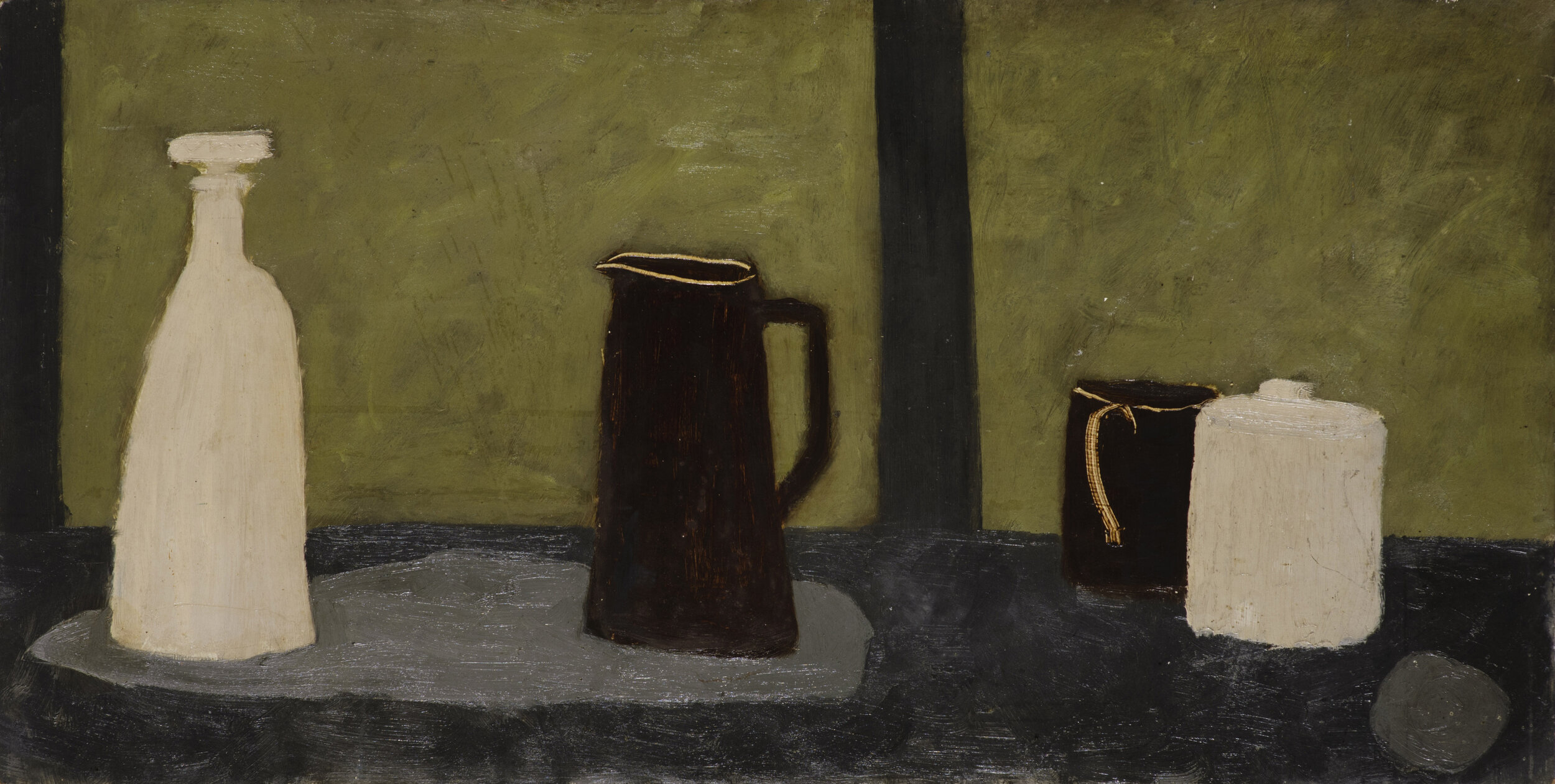Our Curatorial Assistant Kari Adams recently attended the National Galleries of Scotland’s Research Conference on Women Collectors. In this blog she shares her experiences at the event.
Communicating an Identity - recognising women collectors throughout art history
On Saturday 28th September I attended the Scottish National Galleries conference on the topic of Women Collectors presented as part of their annual Research Conference. The event gave host to 6 research papers, written and presented by influential women working within museums and galleries, exploring the role of the ‘woman collector’; in order to highlight, and, more often than not, uncover the significance of their endeavours throughout art history.
The reason for my attendance was to listen, to learn and to enjoy, but I was also there out of respect of the visionary foresight and remarkable gift of a collection by Margaret Gardiner (1904-2005) who founded the Pier Arts Centre in 1979. Without whom, the people of Orkney, and indeed the many beyond, would be unable to access and experience such a significant collection of British modern art. As we continue to celebrate our 40th anniversary year, celebrating other women benefactors through acknowledging and telling their stories on this day felt particularly poignant; and, on a personal level, made me all the more grateful for Margaret’s generosity and the importance of sharing her story too.
The initial question raised in the first paper, Two Hundred years of Women Benefactors of the National Gallery (presented by National Gallery Senior Research Curator Dr Susanna Avery-Quash and colleague, Curatorial Head of Department Christine Riding) of why is there no mention of women benefactors?, set the tone for the knowledge, ideas and considerations which followed. A repeating pattern very quickly emerged as to how this has happened; but the overall reasoning as to why is something which – as individuals and as public collections – we are still fighting for: giving women the recognition they deserve. Noteworthy points included were, 90% of artworks gifted by women in the National Gallery Collection are in the collection store at Trafalgar Square; and, in terms of documentation, the women donors’ names have become ‘separated’ from their gifts, giving way to their more significant male counterparts - which only adds to their invisibility, and underscores the thinking that ‘only the best’ bequests get pride of place. The National Gallery like many other institutions have been giving attention to women artists in recent years – for example, the acquisition of the seventeenth-century Italian Baroque portrait by Artemisia Gentileschi in 2018, which is to be followed by a major exhibition of her work in 2020 – the first solo exhibition on a historical female artist ever held by the National Gallery. This year has also seen a very significant bequest by artist Bridget Riley, who’s commissioned wall-based painting Messengers was influenced by their historic collection – engaging us in conversations surrounding the process of looking at art, and in relation to how we can adjust the gender-bias within national collections.
Image: Artemisia Gentileschi, 'Self Portrait as Saint Catherine of Alexandria', about 1615-17, courtesy of The National Gallery
Image: Bridget Riley and our Director Gabriele Finaldi looking at 'Messengers' © 2019 Bridget Riley. All rights reserved/Photo: The National Gallery, London
Indeed, how we look and how we understand the world around us seems to lie at the very heart of this discussion. Each woman given mention, which included Georgiana Spencer, Queen Alexandra and Naomi Mitchison, created their own unique viewpoint – their gifted, sociable and intellectual endeavours making them both extraordinary women, within their own lifetime, and in terms of culture today. They were all women who created their own artistic and/or collection practices, giving voice and colour to a narrative - essentially communicating an identity which we must acknowledge. It is evident that an important feature of their contributions as collectors was not solely the buying but also the commissioning of artworks. Which, remains unquantifiable in terms of the foresight they had in giving recognition to artists who were driving forces of the avant-garde of their period. All of these women demonstrated taste and understanding for and of the artist of their time. And perhaps, the most common thread I found amongst this ground, was the gift they had for forming friendships.
Image: The Three Witches from Macbeth (Elizabeth Lamb, Viscountess Melbourne; Georgiana, Duchess of Devonshire; Anne Seymour Damer) by Daniel Gardner, gouache and chalk, 1775
© National Portrait Gallery, London
Image: Photograph of the Princess of Wales, later Queen Alexandra, holding a No.1 Kodak camera at chest height. She is standing on the deck of a ship.
The No.1 Kodak camera was introduced in 1889 and took small circular photographs. There are many examples of these photographs in Queen Alexandra's album
© Royal Collections Trust
Dr Kate Cowcher, Lecturer in Art History at the University of St Andrews, presented From Kampala to Campbeltown: Naomi Mitchison and the Argyll Collection, and I couldn’t help but draw similarities between Mitchison and Margaret Gardiner. Both of these women really strived for what they believed in, more often than not for the greater good of others. Mitchison is highly regarded as one of the twentieth century’s most acclaimed writers and her friendships with artists such as Wynham Lewis are well-known. Mitchison’s idea for what is the Argyll Collection originated in the 1980s, which is perhaps the lesser known part of her story, raised questions of culture and education – ultimately, she wanted to give children who wouldn’t otherwise find themselves in an art gallery exposure to art. The ambitions of the collection were to expose Modern Scottish art, fuelled by her desire to buy ‘challenging things’. Mitchison showed a commitment to arts throughout her life, for example, the effect of WWII and the democratisation of the access of art, led Mitchison to auctioning commissions with Matisse and Picasso in the late 1940s. It was hard not to see the parallels with Margaret – both of these women through their friendships were actively supporting artists making ground-breaking work of their time. In 1941 Margaret commissioned Naum Gabo to make a maquette for J. D Bernal, supporting the production of new work during such difficult times allowed Gabo to ‘open a sluice-gate of creative waters’, for which he was extremely grateful. ‘I am very grateful to you, Margaret, for enticing me into doing that work. This construction has been in my mind for more than two years and I am glad that I made it now.’ (Hammer, M., extract from Constructing Modernity: The Career of Naum Gabo, (Yale University Press, 2000) p. 280. Gabo letter to Margaret Gardiner, 27th January 1942)
Margaret’s gift of her collection to the people of Orkney tells us many things about her story which we must not forget and we must acknowledge. Lack of documentation has perhaps been responsible for her role as a woman collector not being better known. That, and interestingly her dislike of the very word ‘collector’ itself – Margaret did not wish to be rendered as one, as she felt her artworks were as much or indeed more about the friendships they represented. Margaret’s many friendships with both literary and artistic figures, and particularly with the St. Ives artists – Barbara Hepworth, Ben Nicholson, Margaret Mellis, and Terry Frost – are known and documented, mostly through correspondence amongst them. Margaret was very dear friends with Barbara Hepworth whom she was introduced to in 1930 through artist friend Solly Zuckerman. It was through this friendship that Margaret believed she really began ‘looking’ at art and started to develop a real taste and flare for visual things. She was very aware of the struggle her contemporaries faced, especially during the war years to keep producing artwork. Like the commissioning of the Gabo maquette, Margaret would purchase artworks from friends as a means to encourage their output and support them financially. Margaret’s ambition for the Pier Arts Centre was simple – she wanted to gift her works to a community who would otherwise not be exposed to such examples of British Modern art. Amongst other factors, creating a centre where local artists could display their work was of great importance. So to, Margaret was also very adamant there to be a ‘Children’s Room’ in the gallery when they were outlining plans for the Pier. A room which still functions with this intention at its core.
Image: Margaret Gardiner c. 1932 by Ramsay and Muspratt photographers
Image: Still Life by Margaret Gardiner
By the end of the conference, there was an overriding feeling that we were only just skimming the surface of who the women collectors we need to be recognising are, and to what extent they have contributed to collections. Each collector outlined represents a vast amount of research which has already gone into uncovering their individual stories. Which only leads to the fact that so much more has still to be done to fully expose the magnitude of their efforts. It is apparent, due to a lack of documentation in many cases, it sadly may well be the case that some stories are just forgotten. But all the more reason to do whatever we can to shine a light on the things we can find out. I am about to embark on a research trip to the Tate Archive in London, where I plan to look into the files pertaining to Margaret. We already know many wonderful and interesting threads of her story, such as those mentioned above, but I feel now more than ever it is important to keep going. How we use this information is also important, in terms of Margaret’s biography, the legacy of the Pier Arts Centre and its Collection, and within the wider context of art and culture. Margaret’s story only gets more compelling the further you explore, and it would be wonderful to think that through continued research we could inform many others of her life’s work. I would like to hope this is the first of many conferences which have the ability to raise awareness of women collectors, and maybe there will be more opportunity to share the joy of Margaret Gardiner in the future.
Image: Margaret Gardiner c. 1980 at the Pier Arts Centre
with Barbara Hepworth’s sculpture Curved Form (Trevalgan) 1956
As we continue to unfold Margaret’s original gift with contemporary collecting and a programme of education and events, how we feed this information into our efforts will hopefully underscore and encourage new and meaningful connections and relationships. As we look ahead to the very near future, the Pier is delighted to be working in partnership with the National Gallery, in collaboration with Contemporary Arts Society, with artist Rosalind Nashashibi who is the 2020 resident selected for their inaugural Modern and Contemporary programme. Click here to read more about the residency.









